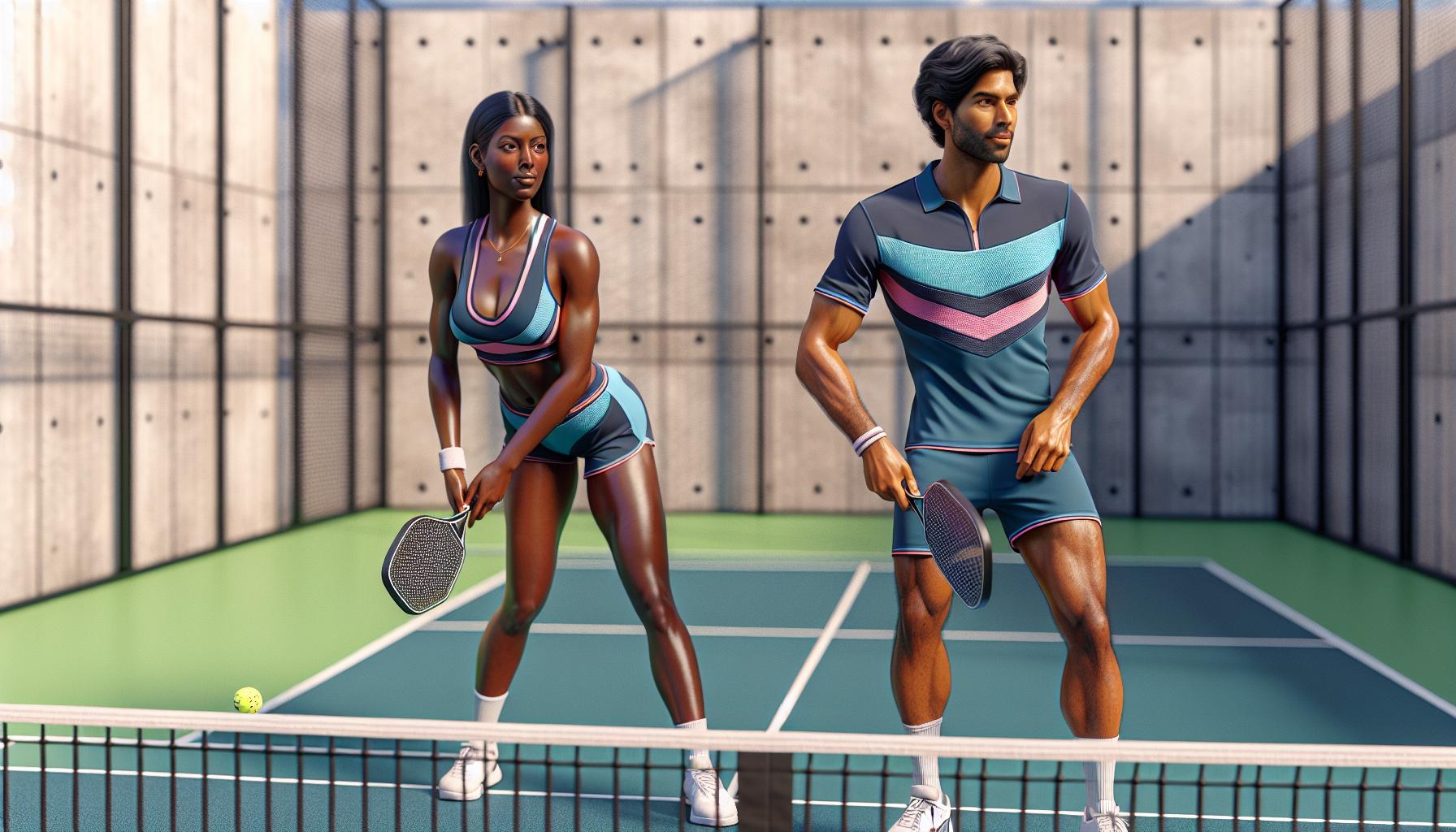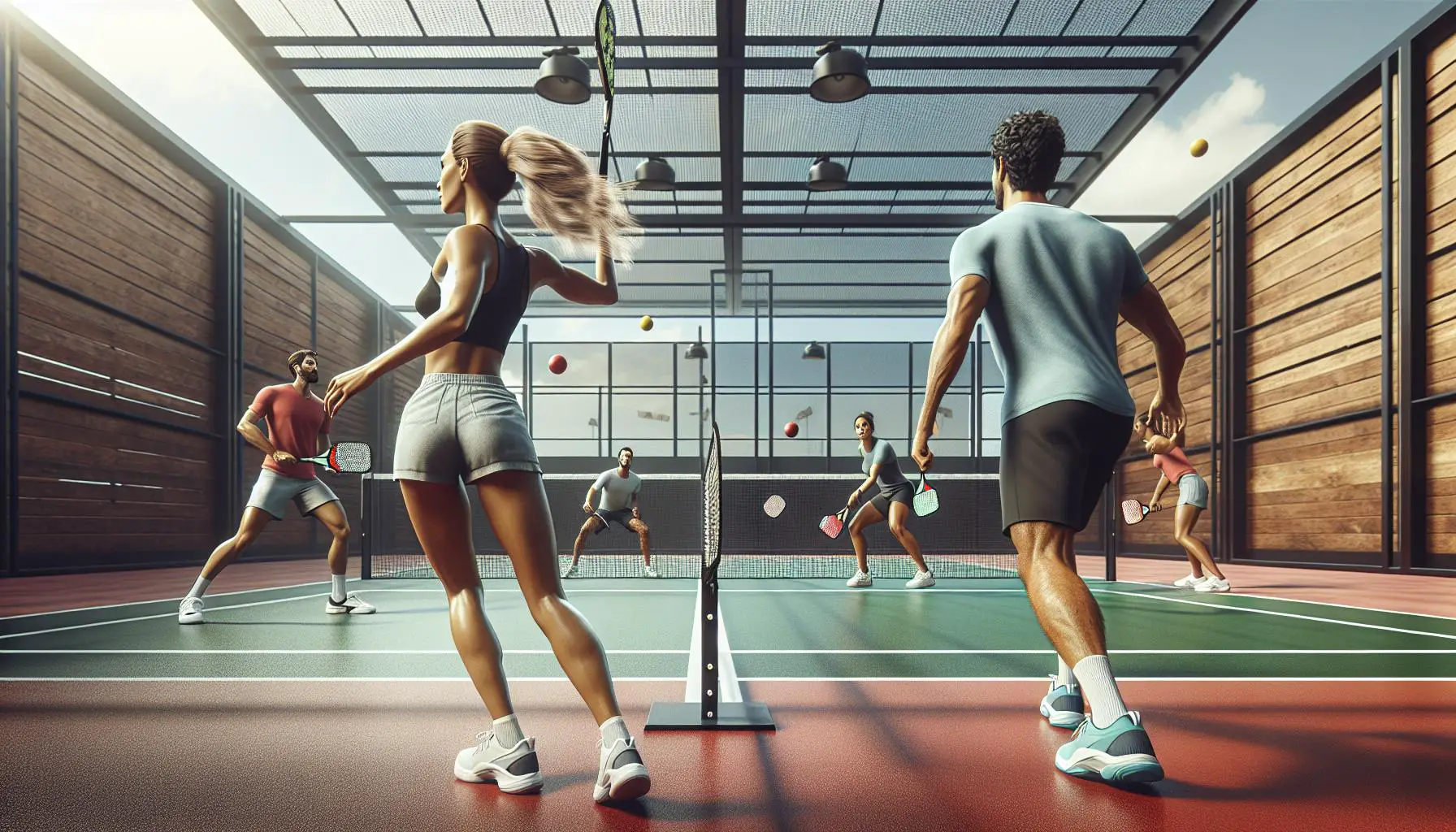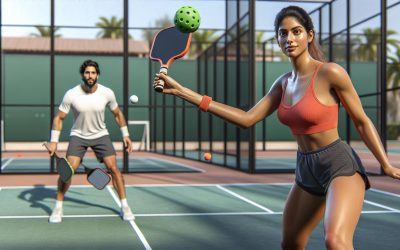Pickleball doubles bring a dynamic twist to the game, turning every match into a dance of strategy and positioning. It’s not just about having a solid serve or a powerful smash; success in doubles hinges on understanding the unspoken rules that govern team play.
Navigating the court with a partner adds layers of complexity and excitement. From the initial serve to the final point, each move and decision must be synchronized, blending individual skills into a seamless duo performance. As players dive into the world of pickleball doubles, mastering these strategies becomes the key to dominating the court.
Understanding the Basics of Doubles Strategy
Doubles pickleball brings a unique twist to the traditional game, placing a heightened emphasis on strategic play and precision positioning. Knowing where to be and when is just as critical as having a powerful serve or a precise shot. In this section, they’ll delve into the underpinnings of effective doubles strategy, offering players insights into how they can elevate their game by mastering the basics of teamwork and coordination.
Communication stands at the forefront of a winning doubles strategy. Partners must constantly talk to each other, calling out shots and movements to avoid collisions and to ensure they cover the court effectively. This verbal interchange helps in maintaining a fluid movement pattern and prevents gaps in defense that opponents might exploit. Communication isn’t just about speaking; it’s about listening and understanding the playing style and intentions of your partner.
Positioning in doubles pickleball is not static; it’s dynamic and should change based on the flow of the game. The idea of “stacking”, where both players align on the same side of the court to play to their forehand strengths, is a technique often used at all levels of doubles play. This strategy requires both players to be adept at moving quickly and covering the full court, a skill that comes with practice and mutual trust.
The kitchen, or the non-volley zone, plays a pivotal role in doubles strategy. Players should aim to control this area, as being able to play close to the net allows for softer shots and better angles, which can be difficult for the opposing team to return. However, venturing too close without a strategic purpose can leave a team vulnerable to lob shots. Hence, mastering the art of when to move forward and when to hold back is crucial.
Effective serving and return strategies in doubles can set the tone for the entire point. Teams need to develop serves and returns that not only put the opposing team under pressure but also position themselves for an offensive follow-up. Variety in serving — mixing up speeds and directions — can keep opponents guessing and throw them off balance. On the return, aiming for depth and positioning it away from the net player can provide the serving team less advantage and more time for the returning team to set up for the next shot.
The Importance of Communication on the Court
In the fast-paced game of pickleball doubles, the importance of communication cannot be overstated. It’s the glue that holds the team together, ensuring both players are in sync, and it often becomes the defining factor between a good team and a great one. This section delves into why clear, continuous communication is an indispensable part of a winning doubles strategy.
First and foremost, communicating with a partner on the court helps avoid confusion and collisions. Pickleball, with its quick volleys and strategic placements, requires players to constantly move and adapt. By verbally calling out shots, intentions, or warnings such as “mine,” “yours,” or “switch,” teammates can effectively coordinate their movements and cover the court more efficiently.
Moreover, strategic communication plays a pivotal role in executing game plans. Before each serve, partners often discuss tactics, like which player to target or where to place the serve, to gain an advantage. This pre-point strategy shapes the direction of play, aiming to exploit opponents’ weaknesses or to play to the team’s strengths. Regular dialogue about strategies not only allows for the fine-tuning of tactics mid-game but also helps in building a dynamic game plan that can adapt to the fluctuations of the match.
Effective communication isn’t just verbal. It also encompasses nonverbal cues such as body language, eye contact, and hand signals, especially in noisy environments or when silence is strategic. Teams sometimes develop their own set of signals to call out plays or positions secretly, adding a layer of sophistication to their game strategy. Hand signals can indicate a planned serve direction or a strategic poach, giving a team the upper hand without alerting their opponents.
Recognizing the significance of communication, successful pickleball teams spend considerable time developing and honing their communication skills. This involves not only clear and concise verbal exchanges but also active listening, anticipation, and understanding. Players must be attuned to their partner’s tendencies and be able to read their cues instinctively.
Furthermore, constructive communication extends beyond the court boundaries. Post-game discussions about what worked well, what didn’t, and how to adapt strategies for future matches are integral to a team’s growth and improvement. Reflecting on gameplay together allows for constructive feedback and shared learning experiences, which are essential in evolving as a cohesive unit.
Mastering Court Positioning and Movement

In the fast-paced world of pickleball doubles, understanding and mastering court positioning and movement can often mean the difference between victory and defeat. Proper positioning allows players to cover the court effectively, making it difficult for opponents to find open spaces to exploit. Moreover, coordinated movement ensures that both players are working in harmony, maximizing their strengths and shoring up any weaknesses.
The Significance of Starting Positions
The game begins with both players on a team positioning themselves strategically to defend their half of the court. The serving team has the server positioned at the baseline, while their partner stands at the net ready to volley. This initial setup aims to cover the largest possible area of the court right from the serve. On the receiving end, both players typically position themselves near the baseline to ensure they can return the serve and quickly transition into an offensive stance.
Moving as a Unit
One fundamental aspect of doubles pickleball is the concept of moving as a unit. This means that both players should move in tandem – when one moves forward, the other does as well; when one retreats, so does the partner. This synchronized movement prevents gaps from opening up on the court, reducing the chances for opponents to hit winning shots. Key to this strategy is communication and anticipation, allowing players to remain fluid in their movements and adapt to the dynamic nature of the game.
Court Coverage Strategies
Effective court coverage in doubles pickleball hinges on understanding both your and your partner’s strengths and weaknesses. Players often adopt one of two primary formations:
- The Square Formation: Both players position themselves equally, covering one side of the court each. This formation is simple and can be highly effective at the beginner to intermediate levels as it clearly defines responsibilities. However, it might not maximize a team’s strengths as efficiently as more advanced formations.
- The Staggered Formation: In this setup, one player positions slightly ahead of the other, allowing for a more dynamic defense and offense. The staggered formation can capitalize on one player’s net skills while allowing the other to cover deep shots. It requires a higher level of coordination and communication but can be a powerful strategy against experienced opponents.
Adapting to Different Opponents and Game Situations

In pickleball doubles, each match presents its own unique challenges. Players encounter various opponents with different skill sets, strategies, and weaknesses. As such, the ability to adapt quickly to different game situations is essential for success. This section delves into the importance of versatility and highlights methods for adjusting strategies based on the adversary’s gameplay.
Observing Opponents is the first step in the adaptation process. Players should watch for opponents’ tendencies, such as favoring certain shots or avoiding backhand volleys. This observation allows the team to anticipate moves and counteract effectively. Some key aspects to focus on include:
- Preferred serve styles and service zones
- Dominant playing hands and weaker sides
- Patterns in shot selection and placements
By understanding these elements, teams can tailor their gameplay to exploit weaknesses or reinforce their defense against opponents’ strengths.
Communication and Coordination between partners are paramount when facing different opponents. Teams should discuss observed tendencies and agree on a flexible game plan before the match starts. As the game progresses, quick whispers or hand signals can help make instant strategy adjustments without giving away the plan to the other team. Effective communication ensures that both players are aligned with the evolving strategy, maximizing their defensive and offensive capabilities.
The concept of Dynamic Positioning comes into play when adapting to game situations. Unlike static strategies that rely on predetermined movements, dynamic positioning encourages players to react to the ball and their opponents’ actions. This approach might involve:
- Shifting the Square or Staggered Formations based on opponents’ weaknesses
- Moving closer to the net to apply pressure on opponents who struggle with volleys
- Rotating positions to cover the court more effectively against skilled lobbers
Teams must practice various formations and transitions to become comfortable with dynamic positioning.
Pacing and Energy Management are crucial when dealing with different opponents and game durations. Some matches require a fast-paced aggressive approach, while others need a more measured and defensive strategy. Knowing when to push for quick points or when to conserve energy for long rallies can be the difference between winning and losing. Adjusting the pace based on opponents’ fitness levels and playing styles can exploit their weaknesses or diminish their strengths.
Utilizing Effective Strategies for Winning Points

When aiming to outshine the competition in pickleball doubles, mastering the art of winning points through strategic play becomes paramount. This involves a blend of potent serve techniques, vigilant net play, and calculated shot selection. Each component serves as a critical piece of the puzzle, paving the way for a team’s success on the court.
First off, serving with precision stands out as a fundamental strategy. A well-placed serve can significantly disrupt the opponents’ positioning and return quality, setting up the serving team for an advantageous first strike. Varied serves—mixing speeds and angles—ensure the opponents remain off-balance, making it difficult for them to settle into a comfortable rhythm.
Transitioning from serving to playing at the net, effective net presence emerges as a critical factor. Teams that dominate the net tend to control the pace and flow of the game. This involves both partners moving in sync to cover the court adequately, ensuring there are no glaring gaps for opponents to exploit. Quick reflexes and soft hands for volleys and drop shots near the net can turn a defensive stance into an offensive opportunity in a heartbeat.
On the other side of the net, strategic shot selection can drastically alter the game’s dynamics. This encompasses a range of tactics:
- Dinking: A gentle shot that lands in the opponents’ non-volley zone, forcing them to approach the net and possibly creating openings for a winning shot.
- Lobbing: When opponents are too close to the net, a well-timed lob over their heads can be an effective way to win points.
- Hitting at the feet: Aiming shots at the opponents’ feet makes it difficult for them to return the ball with power, often resulting in a weaker return that can be capitalized upon.
Incorporating these strategies requires teams to constantly assess and adapt to the unfolding game. Observing opponents’ weaknesses and adjusting the play style accordingly can turn the tide in one’s favor. For instance, if an opponent struggles with high balls, incorporating more lobs into the game plan might be beneficial. Conversely, if opponents are less agile, focusing on placing shots that force them to move extensively could yield results.
Conclusion
Mastering the art of pickleball doubles requires more than just skill—it’s about strategy, teamwork, and adaptability. By focusing on varied serves, maintaining a strong net presence, and choosing shots wisely, teams can dominate the court. Remember, it’s crucial to stay observant and flexible, always ready to tweak your approach in response to your opponents’ gameplay. With these strategies in hand, you’re well on your way to becoming a formidable force in pickleball doubles. So grab your paddle, partner up, and put these tips into action. The game is yours to win!














0 Comments